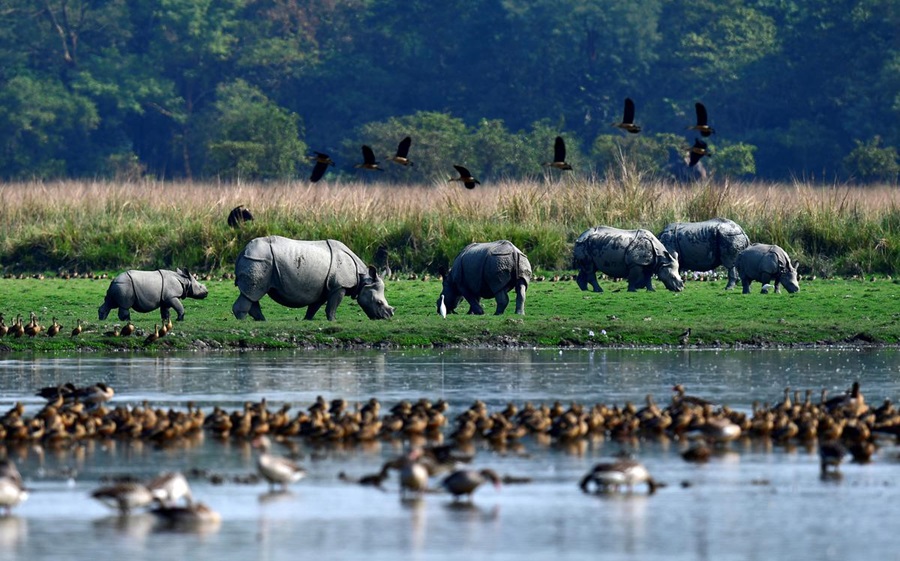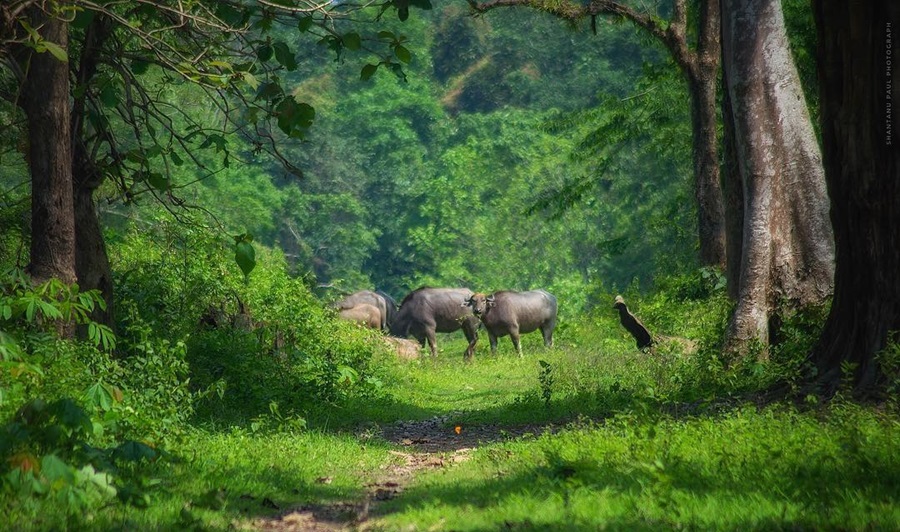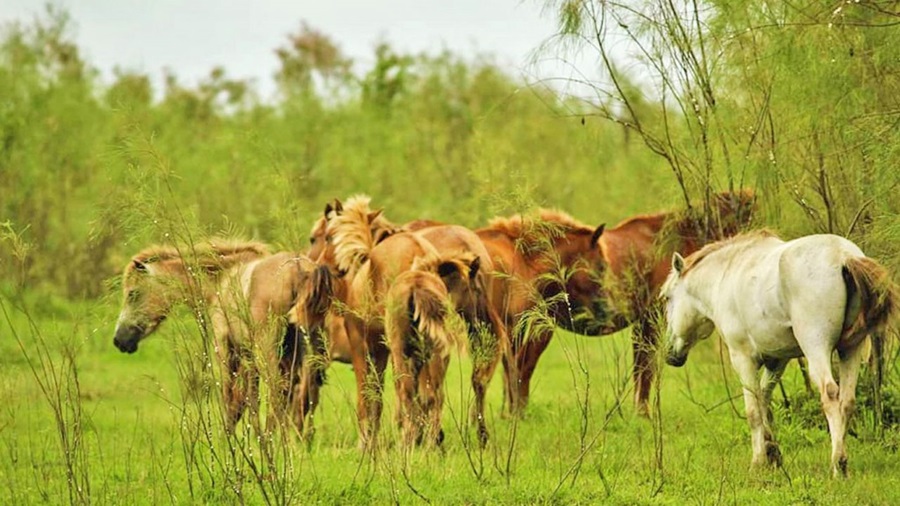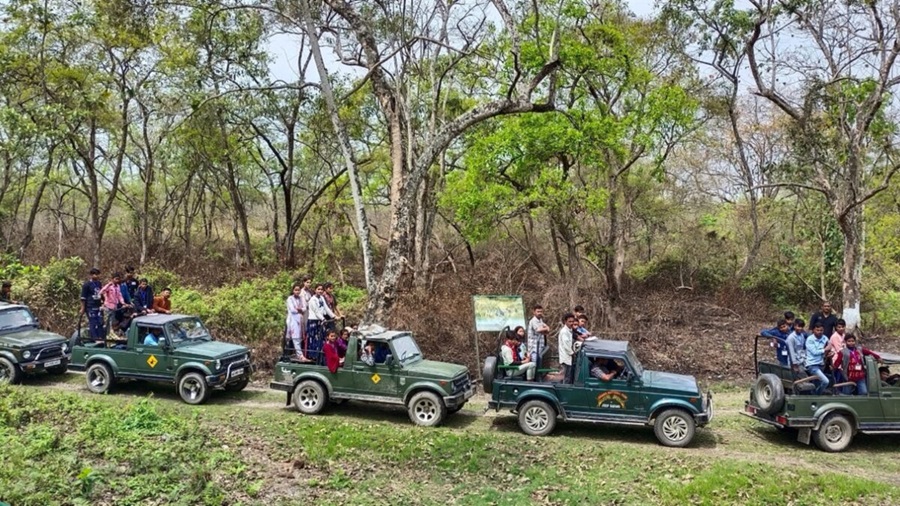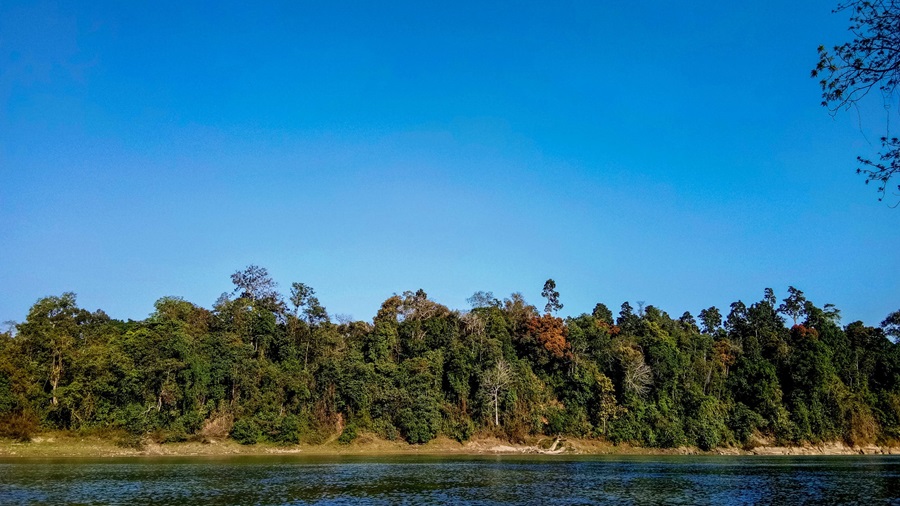Northeast India, with its lush green landscapes, towering mountains, and pristine rivers, is a haven for wildlife lovers. The region’s unique biodiversity, shaped by its geography and climate, includes a plethora of endangered species, making it one of the most ecologically significant areas in the world. The wildlife sanctuaries and national parks in Northeast India are not just home to magnificent creatures like the one-horned rhinoceros, Bengal tigers, and red pandas but are also vital for the conservation of flora, fauna, and avian species.
This guide will explore 25 of the most popular wildlife sanctuaries and national parks in Northeast India, offering insights into the rich biodiversity, best times to visit, and key attractions of each location.
1- Kaziranga National Park, Assam
- Entry Fee: INR 100 for Indians, INR 650 for foreigners
- Elephant Safari: INR 750 for Indians, INR 1250 for foreigners
- Still Camera: INR 100 for Indians, INR 200 for foreigners
- Main Attractions: One-horned rhinoceroses, Bengal tigers, elephants, jeep safaris
- Best Time to Visit: November to April
- How to Reach: Nearest airport is Jorhat (96 km), and the nearest railway station is Furkating (75 km). Well-connected by road.
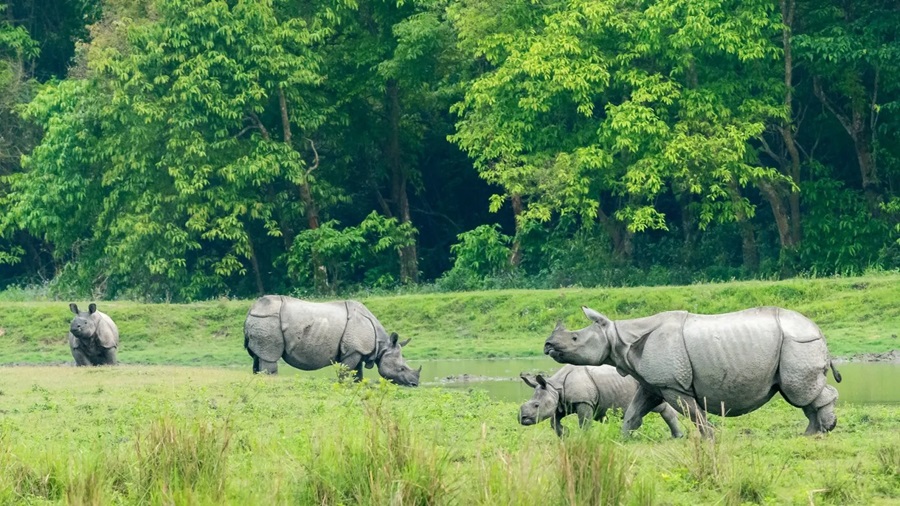
Kaziranga National Park is perhaps the most famous wildlife sanctuary in Northeast India. This UNESCO World Heritage Site is home to more than 2,200 Indian one-horned rhinoceroses, which account for around two-thirds of the global population. Apart from rhinos, Kaziranga is also home to Bengal tigers, elephants, wild water buffalo, and a variety of bird species.
Kaziranga’s diverse landscape, which includes elephant-grass meadows, swampy lagoons, and dense forests, provides a perfect habitat for the animals. Visitors can take jeep safaris or elephant rides to explore the park. The best time to visit Kaziranga is from November to April, as the park remains closed during the monsoon season.
2- Manas National Park, Assam
- Entry Fee: INR 300 for Indians, INR 900 for foreigners
- Elephant Safari: INR 1200 for Indians, INR 2000 for foreigners
- Still Camera: INR150 for Indians, INR 300 for foreigners
- Main Attractions: Tigers, elephants, river rafting, jeep safaris
- Best Time to Visit: October to April
- How to Reach: Nearest airport is Guwahati (176 km), and Barpeta Road is the nearest railway station (22 km). Accessible by road.
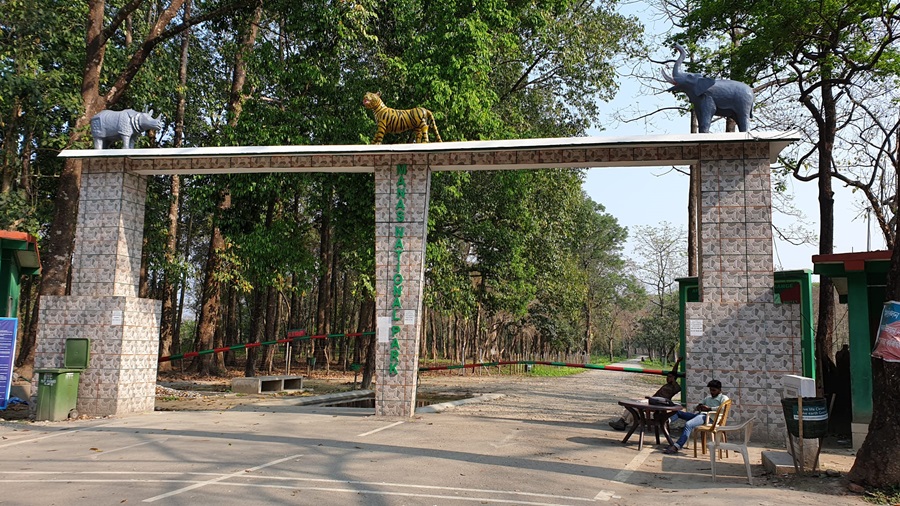
Another UNESCO World Heritage Site, Manas National Park is located at the foothills of the Himalayas. It is a biosphere reserve and a Project Tiger reserve. Manas is not only famous for its population of tigers and elephants but is also home to other endangered species like the Assam Roofed Turtle, Golden Langur, and Pygmy Hog.
Apart from the wildlife safaris, visitors to Manas can also enjoy river rafting on the Manas River. The park’s lush forests and grasslands make it one of the most picturesque national parks in India.
3- Pobitora Wildlife Sanctuary, Assam
- Entry Fee: INR 50 for Indians, INR 500 for foreigners
- Elephant Safari: INR 450 for Indians, INR 1000 for foreigners
- Still Camera: INR 50 for Indians, INR 50 for foreigners
- Main Attractions: One-horned rhinos, birdwatching
- Best Time to Visit: November to February
- How to Reach: Nearest airport is Guwahati (50 km), and well-connected by road.
Pobitora Wildlife Sanctuary is a small sanctuary but has the highest density of one-horned rhinos in the world. It’s a hidden gem for wildlife enthusiasts looking for a quieter, less crowded alternative to Kaziranga. Spread over an area of just 38 sq km, Pobitora also offers sightings of wild boars, buffaloes, and a variety of bird species.
Pobitora is often included in itineraries along with Kaziranga and Manas due to its proximity. The best time to visit is from November to February.
4- Nameri National Park, Assam
- Entry Fee: INR 50 for Indians, INR 500 for foreigners
- Elephant Safari: INR 460 for Indians, INR 1080 for foreigners
- Still Camera: INR 50 for Indians, INR 50 for foreigners
- Main Attractions: Birdwatching, river rafting, rare wildlife
- Best Time to Visit: November to April
- How to Reach: Nearest airport is Tezpur (35 km), and well-connected by road.
Nameri National Park, located along the Jia Bhoroli River, is known for its scenic beauty and diverse wildlife. The park is a bird lover’s paradise, with over 300 species of birds, including the White-winged Wood Duck, a rare species. Visitors can also spot elephants, tigers, and leopards here.
One of the highlights of Nameri is the river rafting experience on the Jia Bhoroli River, which allows visitors to enjoy both the serene landscape and wildlife.
5- Dibru-Saikhowa National Park, Assam
- Entry Fee: INR 50 for Indians, INR 500 for foreigners
- Main Attractions: Feral horses, boat safaris, birdwatching
- Best Time to Visit: November to April
- How to Reach: Nearest airport is Dibrugarh (40 km), and the park is accessible by road.
Dibru-Saikhowa is one of the few riverine national parks in India. Situated on the south bank of the Brahmaputra River, this park is home to wild horses known as Feral horses, which are a unique sight in India. Dibru-Saikhowa is also a paradise for birdwatchers, with several migratory and resident birds.
The park’s landscape, which includes river islands and swamp forests, adds to its charm. Boat safaris are popular here, offering visitors a chance to explore the park’s biodiversity while cruising down the Brahmaputra.
6- Orang National Park, Assam
- Entry Fee: INR 50 for Indians, INR 500 for foreigners
- Elephant Safari: INR 450 for Indians, INR 1000 for foreigners
- Still Camera: INR 50 for Indians, INR 50 for foreigners
- Main Attractions: One-horned rhinoceroses, tigers, elephants
- Best Time to Visit: November to April
- How to Reach: Nearest airport is Tezpur (80 km), and well-connected by road.
Orang National Park is often referred to as the “Mini-Kaziranga” because of its similar landscape and population of one-horned rhinos. Located along the northern banks of the Brahmaputra River, Orang is home to rhinoceroses, tigers, elephants, and a variety of other animals and birds.
Although smaller in size compared to Kaziranga, Orang offers excellent wildlife viewing opportunities and is less crowded, making it ideal for those seeking a quieter safari experience.
7- Gibbon Wildlife Sanctuary, Assam
- Entry Fee: INR 50 for Indians, INR 500 for foreigners
- Camera: Rs.500/-
- Main Attractions: Hoolock gibbons, primate species, jungle treks
- Best Time to Visit: October to April
- How to Reach: Nearest airport is Jorhat (25 km), and accessible by road.
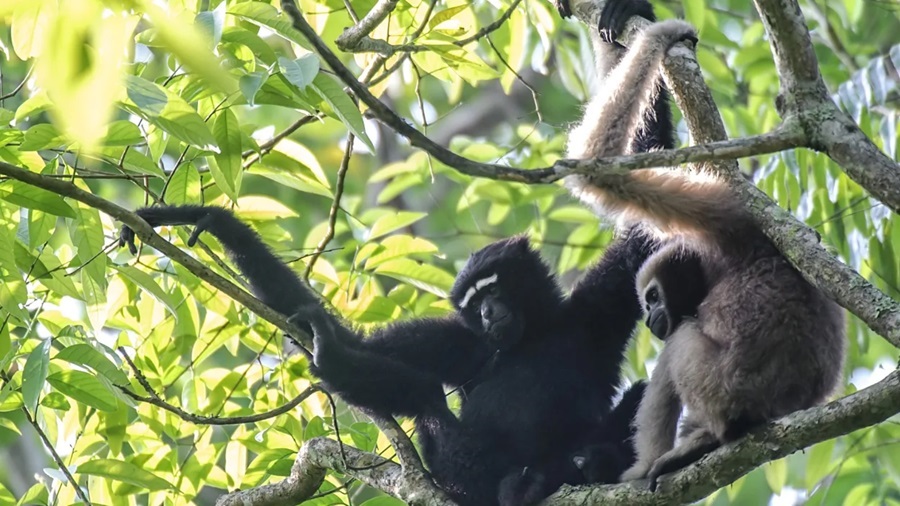
Gibbon Wildlife Sanctuary is named after the hoolock gibbons that inhabit the area. It is the only sanctuary in India that is home to seven species of primates, including the Western Hoolock Gibbon. The sanctuary is a paradise for primate lovers, and the dense forest adds an adventurous charm to the experience.
The sanctuary is also home to elephants, leopards, and various species of birds and reptiles.
- Suggested Tour: Assam Tour Packages
8- Dehing Patkai Wildlife Sanctuary, Assam
- Entry Fee: INR 50 for Indians, INR 500 for foreigners
- Main Attractions: Elephants, clouded leopards, WWII historical sites
- Best Time to Visit: October to April
- How to Reach: Nearest airport is Dibrugarh (80 km), and accessible by road.
Dehing Patkai, also known as “The Amazon of the East,” is one of the most ecologically significant rainforests in India. This dense forest is home to elephants, clouded leopards, and many other species of mammals, birds, and reptiles.
The sanctuary is also important for its rich history, as it has remnants of World War II camps and the historic Stilwell Road. The best time to visit Dehing Patkai is between October and April.
9- Eagle’s Nest Sanctuary, Arunachal Pradesh
- Entry Fee: INR 50 for Indians, INR 500 for foreigners
- Main Attractions: Birdwatching, rare Bugun Liocichla, scenic trekking
- Best Time to Visit: November to April
- How to Reach: Nearest airport is Tezpur (90 km), and well-connected by road.
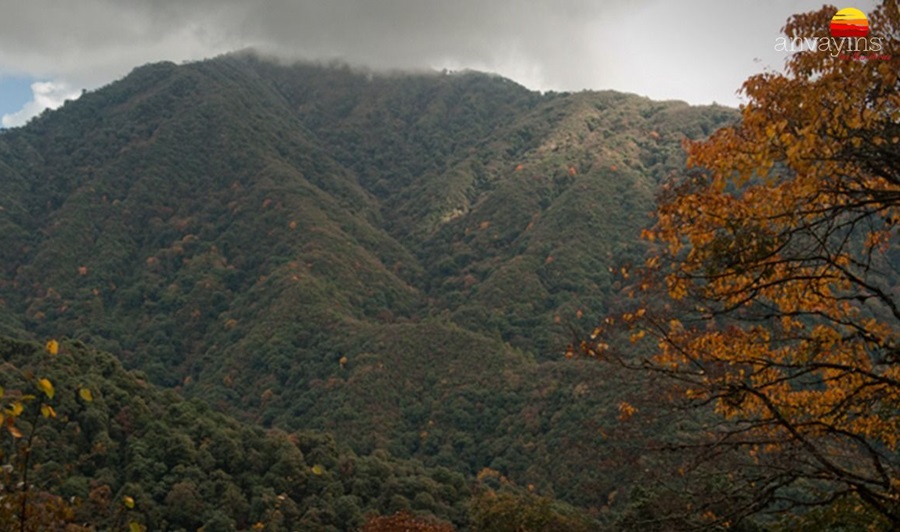
Eagle’s Nest Sanctuary, located in the Himalayan foothills, is one of the best birding sites in India. It is home to the rare Bugun Liocichla, discovered here in 1995. Apart from birds, the sanctuary is also home to mammals like the red panda, Bengal tiger, and Asiatic elephant.
The scenic beauty of the sanctuary, coupled with its rich biodiversity, makes it a popular destination for birdwatchers and nature lovers.
10- Namdapha National Park, Arunachal Pradesh
- Entry Fee: INR 100 for Indians, INR 500 for foreigners
- Main Attractions: Snow leopards, tigers, diverse landscapes
- Best Time to Visit: October to March
- How to Reach: Nearest airport is Dibrugarh (180 km), and accessible by road.
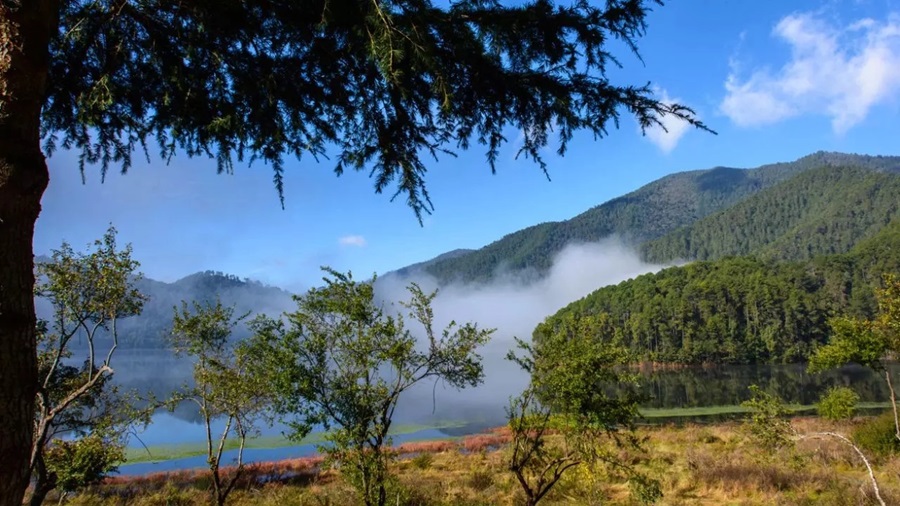
Namdapha is the largest national park in Northeast India and is renowned for its rich biodiversity. The park is a hotspot for big cats, as it is home to four species of the cat family: tigers, leopards, snow leopards, and clouded leopards.
Namdapha’s diverse landscape, which ranges from tropical rainforests to snow-capped mountains, makes it one of the most ecologically significant national parks in India. The best time to visit Namdapha is between October and March.
11- Sessa Orchid Sanctuary, Arunachal Pradesh
- Entry Fee: INR 30 for Indians, INR 250 for foreigners
- Main Attractions: Orchid species, scenic treks
- Best Time to Visit: October to April
- How to Reach: Nearest airport is Tezpur (100 km), and well-connected by road.
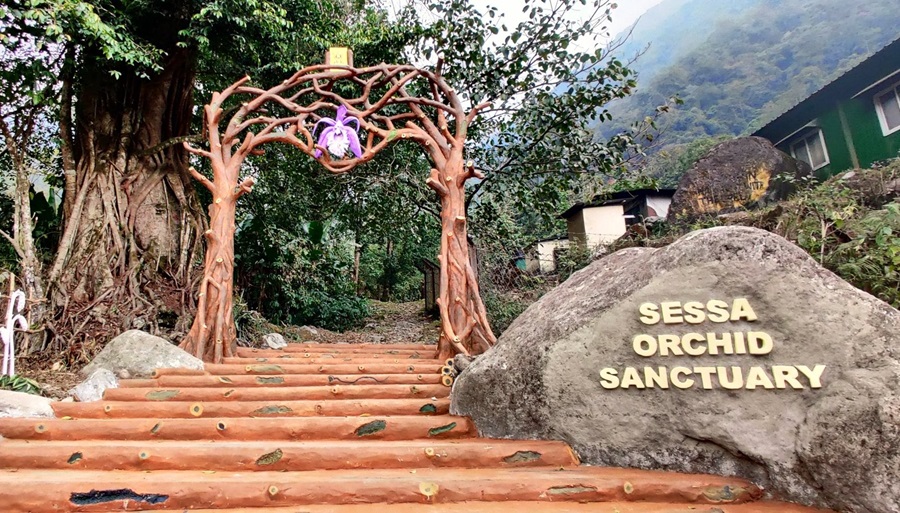
Sessa Orchid Sanctuary is a floral paradise, home to over 200 species of orchids. Located in the West Kameng District of Arunachal Pradesh, this sanctuary is a treasure trove for botanists and nature lovers.
Apart from orchids, the sanctuary is also home to various wildlife species, including red pandas and pheasants.
12- Mouling National Park, Arunachal Pradesh
- Entry Fee: INR 50 for Indians, INR 500 for foreigners
- Main Attractions: Red pandas, trekking, pristine wilderness
- Best Time to Visit: November to April
- How to Reach: Nearest airport is Dibrugarh (230 km), and accessible by road.
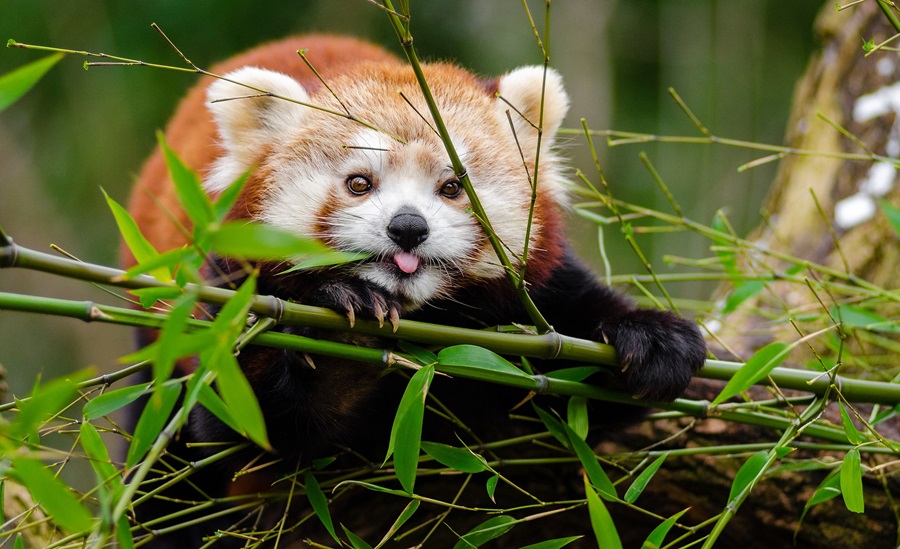
Mouling National Park is a lesser-known gem located in the Siang District of Arunachal Pradesh. The park is home to a variety of wildlife, including tigers, snow leopards, and red pandas. The rugged terrain and dense forests of Mouling make it a perfect destination for adventurers and wildlife enthusiasts.
13- Pakke Tiger Reserve, Arunachal Pradesh
- Entry Fee: INR 20 for Indians, INR 250 for foreigners
- Main Attractions: Hornbill sightings, tigers, elephants
- Best Time to Visit: November to April
- How to Reach: Nearest airport is Tezpur (150 km), and accessible by road.
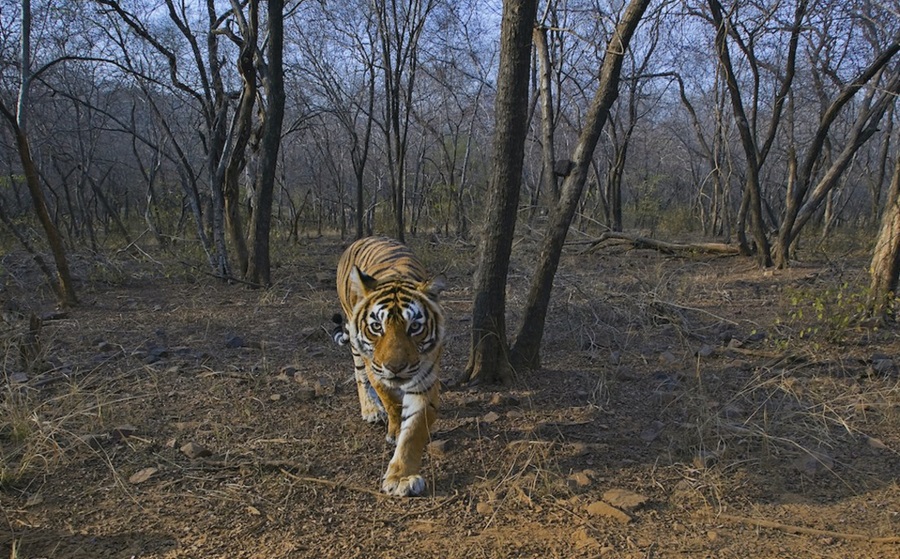
Pakke Tiger Reserve is a Project Tiger reserve known for its efforts in tiger conservation. The reserve is located along the Kameng River and is home to tigers, elephants, and hornbills. Pakke is also known for its scenic beauty, with dense forests and rivers flowing through the park.
The reserve is particularly famous for its hornbill population, and the Hornbill Festival held here attracts many visitors each year.
- Suggested Tour: Arunachal Pradesh Tour Packages
14- Keibul Lamjao National Park, Manipur
- Entry Fee: INR 50 for Indians, INR 500 for foreigners
- Main Attractions: Floating habitat, Sangai deer
- Best Time to Visit: November to March
- How to Reach: Nearest airport is Imphal (55 km), and accessible by road.
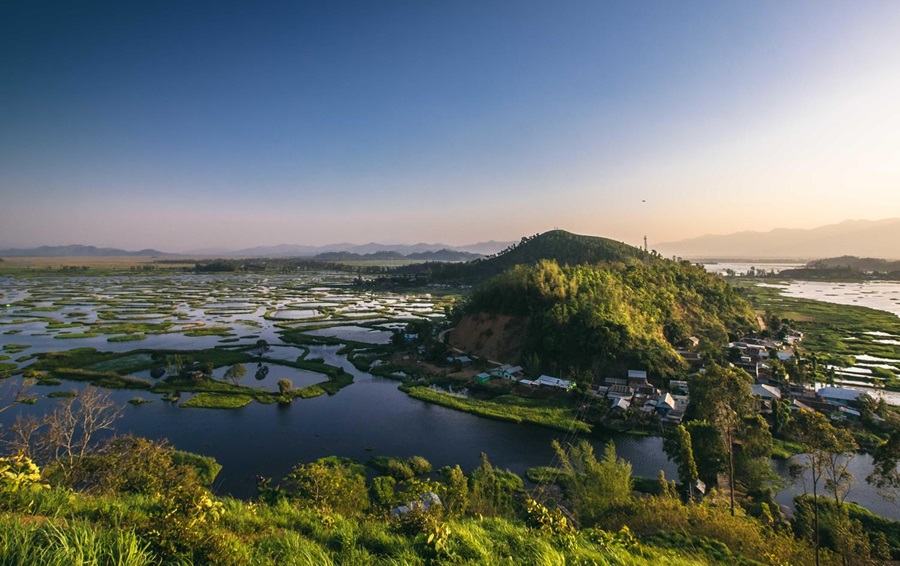
Keibul Lamjao is the world’s only floating national park, located on the Loktak Lake in Manipur. The park is famous for being the last natural habitat of the endangered Sangai deer (brow-antlered deer). The floating vegetation, known as “phumdis,” is a unique feature of the park.
Apart from the Sangai deer, the park is home to a variety of other wildlife, including migratory birds and aquatic species.
15- Shirui National Park, Manipur
- Entry Fee: INR 30 for Indians, INR 300 for foreigners
- Main Attractions: Shirui Lily (May-June), scenic trekking
- Best Time to Visit: May and June for the Shirui Lily
- How to Reach: Nearest airport is Imphal (100 km), and accessible by road.
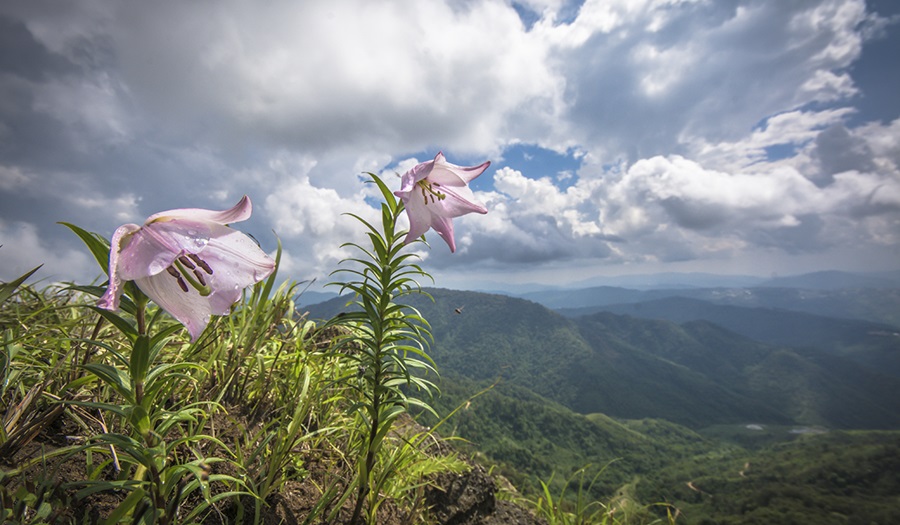
Shirui National Park is located in the Ukhrul district of Manipur and is known for the rare Shirui Lily (Lilium mackliniae), which blooms in the months of May and June. The park is also home to a variety of wildlife, including leopards, tigers, and numerous bird species.
The scenic beauty of Shirui Hill, combined with the rare lilies, makes it a popular destination for nature lovers.
16- Dampa Tiger Reserve, Mizoram
- Entry Fee: INR 30 for Indians, INR 300 for foreigners
- Main Attractions: Tigers, elephants, birdwatching
- Best Time to Visit: November to April
- How to Reach: Nearest airport is Aizawl (127 km), and accessible by road.
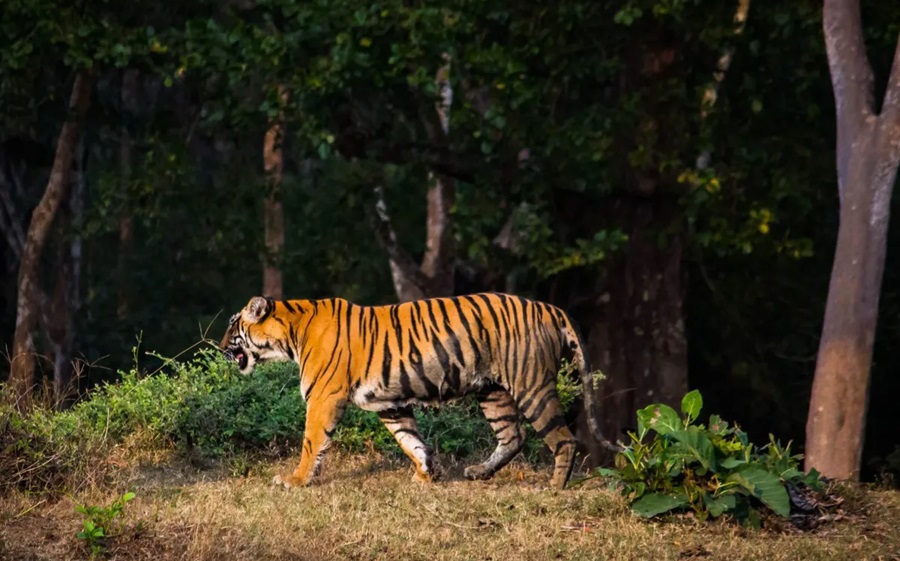
Dampa Tiger Reserve, located along the Indo-Bangladesh border, is the largest wildlife sanctuary in Mizoram. Though tigers are rarely spotted here, the reserve is home to other wildlife like elephants, leopards, and a variety of birds.
The dense forests of Dampa, combined with its remote location, offer an off-the-beaten-path experience for wildlife enthusiasts.
17- Murlen National Park, Mizoram
- Entry Fee: INR 30 for Indians, INR 300 for foreigners
- Main Attractions: Clouded leopards, Hoolock gibbons
- Best Time to Visit: November to April
- How to Reach: Nearest airport is Aizawl (245 km), and accessible by road.
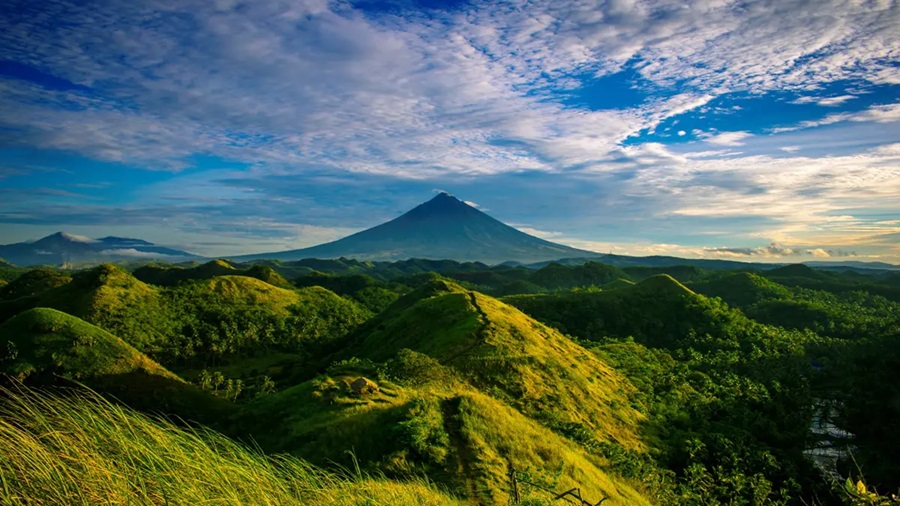
Murlen National Park, located in the Champhai district of Mizoram, is known for its rich biodiversity and pristine forests. The park is home to wildlife species like the clouded leopard, Himalayan black bear, and Hoolock gibbons.
Murlen is one of the least explored national parks in India, making it a hidden gem for nature lovers looking to explore untouched wilderness.
18- Phawngpui National Park, Mizoram
- Entry Fee: INR 30 for Indians, INR 300 for foreigners
- Main Attractions: Phawngpui Peak, clouded leopards, trekking
- Best Time to Visit: November to April
- How to Reach: Nearest airport is Aizawl (300 km), and accessible by road.
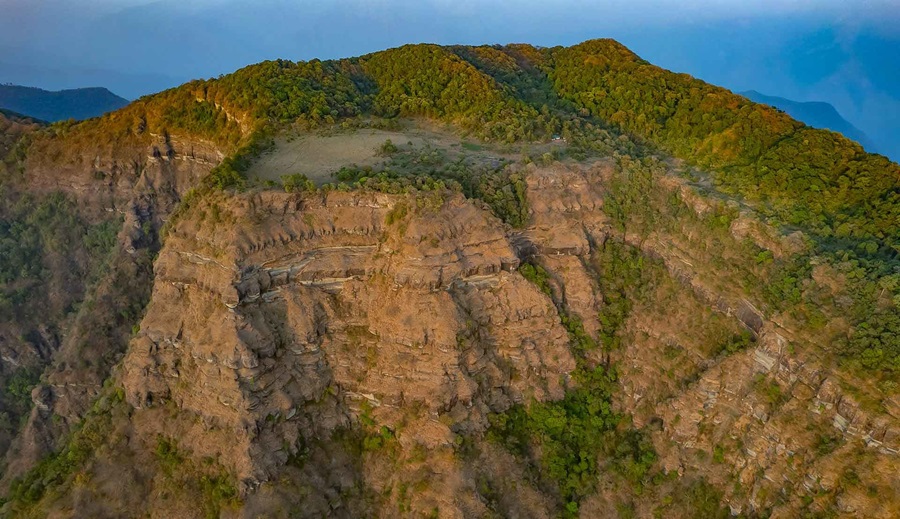
Phawngpui National Park, also known as the Blue Mountain National Park, is located in the southeastern part of Mizoram. The park is named after Phawngpui, the highest peak in Mizoram, and offers stunning views of the surrounding hills and valleys.
Phawngpui is home to a variety of wildlife, including the clouded leopard, serow, and Hoolock gibbons. The park is also known for its rich avian population, making it a great destination for birdwatchers.
- Check out: Mizoram Tour Packages
19- Balpakram National Park, Meghalaya
- Entry Fee: INR 50 for Indians, INR 500 for foreigners
- Main Attractions: Red pandas, mystical landscapes, birdwatching
- Best Time to Visit: November to April
- How to Reach: Nearest airport is Guwahati (220 km), and accessible by road.
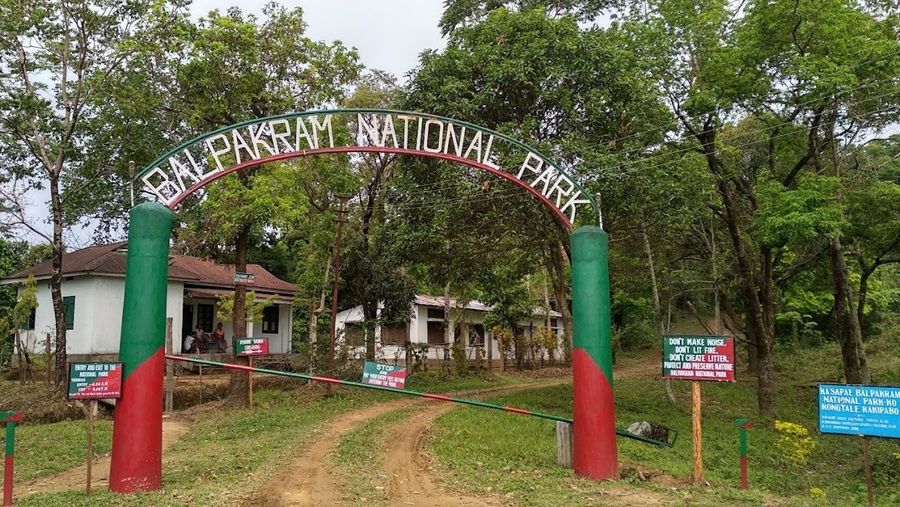
Balpakram National Park, often referred to as the “Land of Spirits,” is a mystical park located in the South Garo Hills of Meghalaya. The park is known for its rugged terrain, deep gorges, and unique rock formations.
Balphakram is home to a variety of wildlife, including elephants, tigers, and red pandas. The park is also a great destination for birdwatchers, with species like the grey hornbill and the great pied hornbill frequently spotted here.
20- Nokrek National Park, Meghalaya
- Entry Fee: INR 50 for Indians, INR 500 for foreigners
- Main Attractions: Red pandas, trekking, birdwatching, biodiversity
- Best Time to Visit: October to April
- How to Reach: Nearest airport is Guwahati (160 km), and the park is well connected by road from Shillong and Tura.
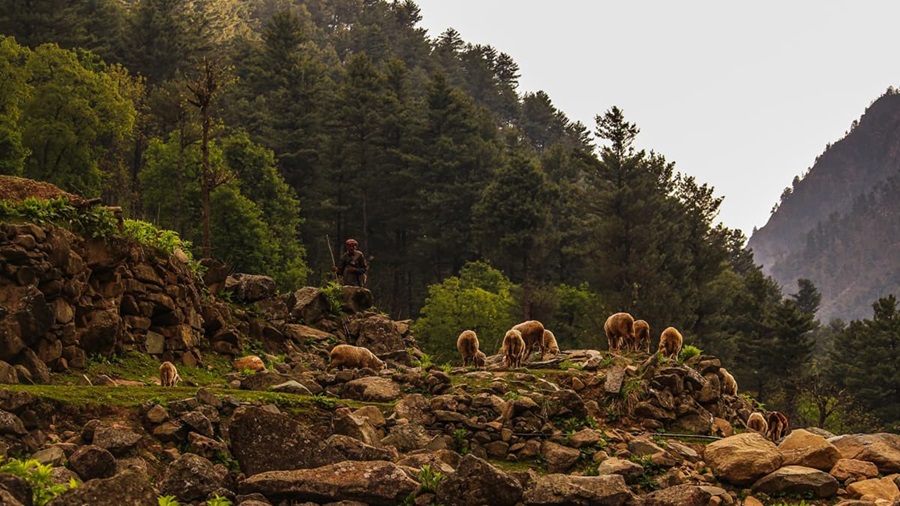
Nokrek National Park, located in the West Garo Hills, is a UNESCO Biosphere Reserve. The park is known for its population of red pandas, as well as other wildlife like elephants, tigers, and leopards. Nokrek is also famous for being one of the last remaining habitats of the endangered Hoolock gibbons in India.
The park’s dense forests and scenic beauty make it a popular destination for trekking and wildlife spotting.
21- Siju Wildlife Sanctuary, Meghalaya
- Entry Fee: INR 50 for Indians, INR 500 for foreigners
- Main Attractions: Migratory birds, Siju Caves, rare species like the Siberian duck
- Best Time to Visit: November to March
- How to Reach: Nearest airport is Guwahati (220 km), and the sanctuary is accessible by road from Shillong and Tura.
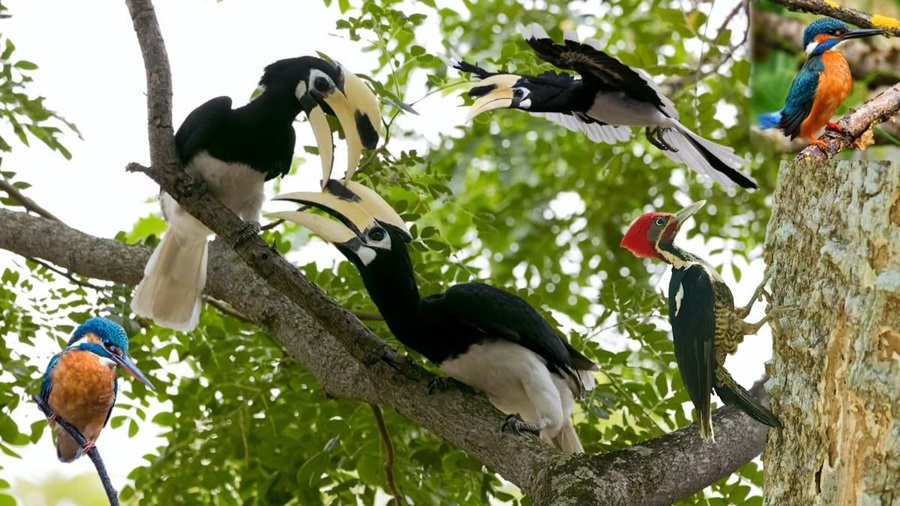
Siju Wildlife Sanctuary, located near the Siju Caves in the South Garo Hills, is known for its rich birdlife. The sanctuary is home to a variety of migratory birds, making it a great destination for birdwatchers.
Apart from birds, Siju is also home to animals like elephants, leopards, and bears. The nearby Siju Caves, one of the longest cave systems in India, add to the sanctuary’s charm.
- Suggested Tour: Meghalaya Tour Packages
22- Khangchendzonga National Park, Sikkim
- Entry Fee: INR 30 for Indians, INR 300 for foreigners
- Main Attractions: Hoolock gibbons, tropical forests, walking trails
- Best Time to Visit: October to April
- How to Reach: The nearest airport is Agartala, which is about 85 km away. It is well connected by road.
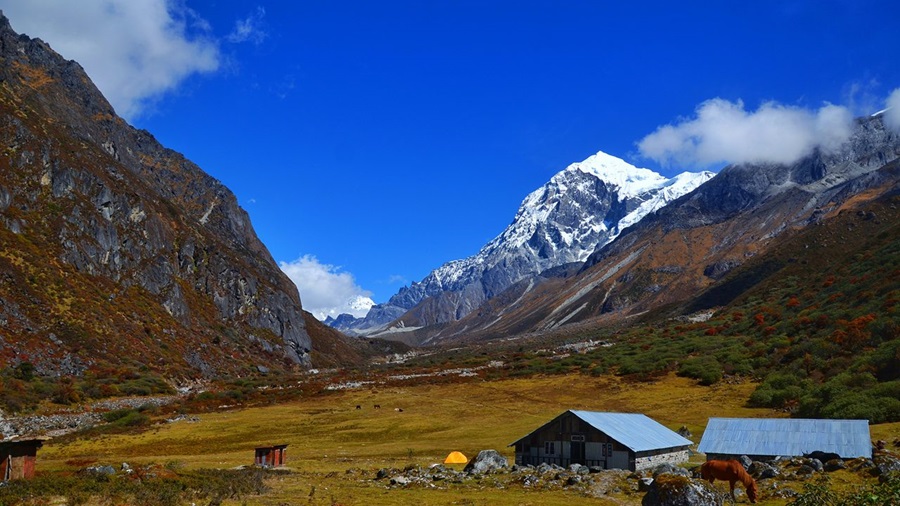
Khangchendzonga National Park, named after Mount Khangchendzonga, the third-highest peak in the world, is a UNESCO World Heritage Site. The park is renowned for its breathtaking landscapes, including glaciers, valleys, and alpine meadows.
Khangchendzonga is home to a variety of wildlife, including snow leopards, red pandas, and Himalayan black bears. The park is also sacred to the people of Sikkim and is an important site for both spiritual and adventure tourism.
23- Singalila National Park, West Bengal (bordering Sikkim)
- Entry Fee: INR 50 for Indians, INR 400 for foreigners
- Main Attractions: Indian bison, birdwatching, diverse flora
- Best Time to Visit: November to March
- How to Reach: Nearest airport is Agartala (100 km), and the sanctuary is well-connected by road.
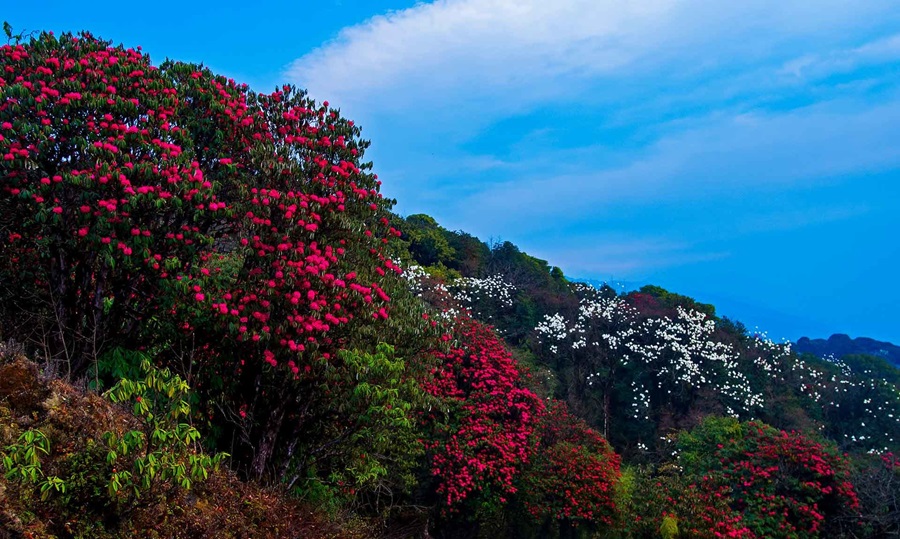
Though located in West Bengal, Singalila National Park shares a border with Sikkim and is an important wildlife destination in the region. The park is famous for its trekking routes, including the Sandakphu trek, which offers panoramic views of four of the world’s five highest peaks.
Singalila is also home to the elusive red panda, along with other wildlife like leopards and pangolins. The park’s rich birdlife makes it a popular destination for birdwatchers.
24- Neora Valley National Park, West Bengal (bordering Sikkim)
- Entry Fee: INR 50 for Indians, INR 500 for foreigners
- Main Attractions: Elephants, tigers, golden langurs, butterfly species
- Best Time to Visit: November to March
- How to Reach: The nearest airport is Guwahati, about 260 km away, with good road connectivity to the park.
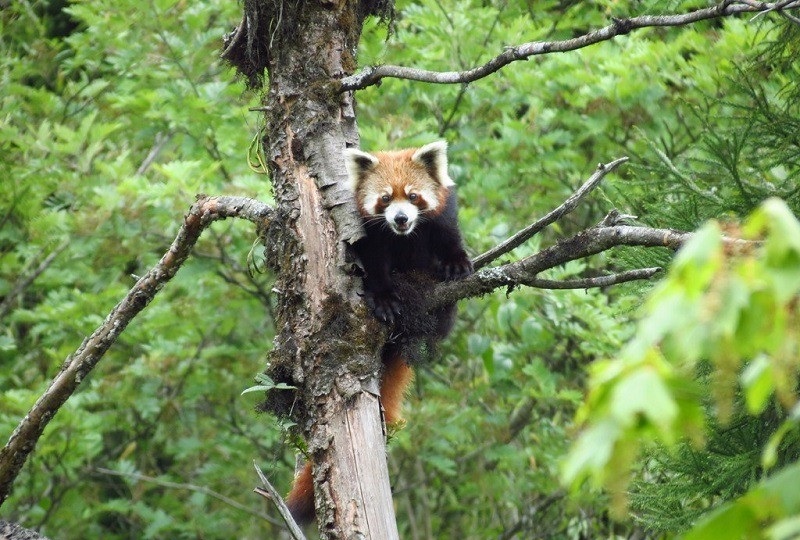
Neora Valley National Park is one of the least explored national parks in India, making it a haven for nature lovers seeking solitude. The park is located in the Kalimpong district of West Bengal and shares a border with Sikkim.
Neora Valley is home to a variety of wildlife, including red pandas, clouded leopards, and barking deer. The park’s dense forests and remote location make it a great destination for trekking and birdwatching.
- Check out: North Sikkim Tour Package
25- Dzukou Valley Wildlife Sanctuary, Nagaland
- Entry Fee: INR 50 for Indians, INR 500 for foreigners
- Main Attractions: Tigers, elephants, birdwatching, trekking
- Best Time to Visit: November to March
- How to Reach: Nearest airport is Aizawl, about 130 km from the reserve. It is well-connected by road.
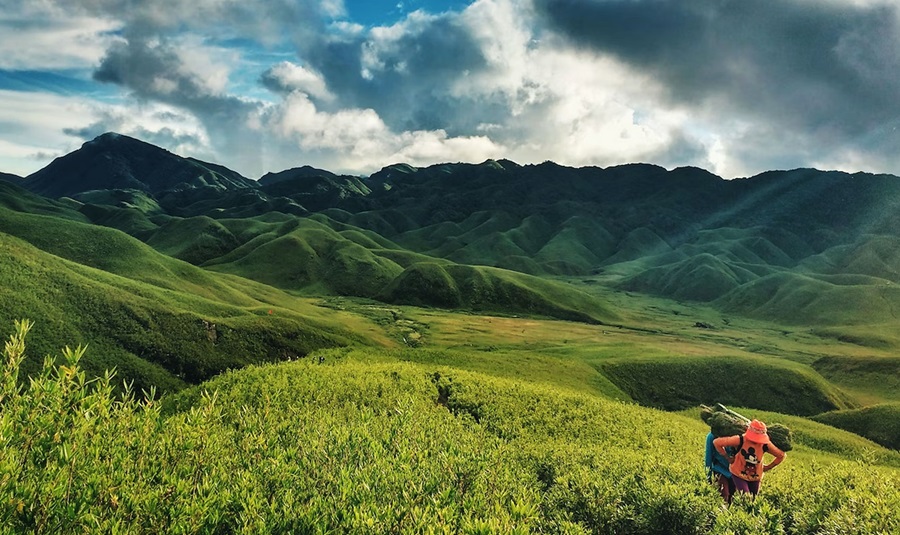
Dzukou Valley Wildlife Sanctuary, located on the border of Nagaland and Manipur, is renowned for its picturesque landscapes and seasonal wildflowers. The valley is often referred to as the “Valley of Flowers of the Northeast.”
The sanctuary is home to a variety of wildlife, including leopards, bears, and a variety of bird species. The trekking route to Dzukou Valley is one of the most popular in Northeast India, offering stunning views of the valley and surrounding hills.
- Check out: Nagaland Tour Packages
Travel Tips
- Visit in the Right Season: Go from November to April for the best weather and animal sightings. Avoid the rainy season when parks may be closed.
- Book Safaris in Advance: Popular parks like Kaziranga can get busy. Pre-book your jeep or elephant rides to secure your spot.
- Respect the Animals: Keep a safe distance from wildlife, stay quiet, and don’t feed them. It’s important for your safety and theirs.
- Use Local Guides: Hire local guides who know the area well. They can share interesting facts about the animals and plants.
- Pack Smart: Bring binoculars, a camera, sunscreen, insect repellent, and water. Wear comfortable shoes and light clothing.
- Follow Park Rules: Stick to the paths, don’t litter, and stay in your vehicle during safaris unless told otherwise.
- Stay Hydrated: Some parks are remote with few facilities. Drink plenty of water and carry a basic first-aid kit.
- Choose Eco-friendly Lodging: Stay at eco-lodges or forest rest houses to support sustainability and enjoy nature.
- Prepare for Travel: Some parks are far from towns. Confirm your transport and accommodation ahead of time.
- Carry IDs and Permits: Some parks require permits for entry, especially in Arunachal Pradesh. Make sure you have all necessary documents ready.
Conclusion
Northeast India, with its diverse geography and rich biodiversity, offers some of the best wildlife experiences in the country. From the rhinos of Kaziranga to the red pandas of Khangchendzonga, the region’s wildlife sanctuaries and national parks are home to some of the rarest and most endangered species on the planet. These protected areas not only provide refuge to these species but also offer visitors a chance to witness the beauty and splendor of nature in its purest form.
Whether you’re a wildlife enthusiast, a birdwatcher, or a trekker, the national parks and wildlife sanctuaries of Northeast India have something for everyone. The region’s untouched wilderness, combined with its rich cultural heritage, makes it one of the most unique travel destinations in India.
